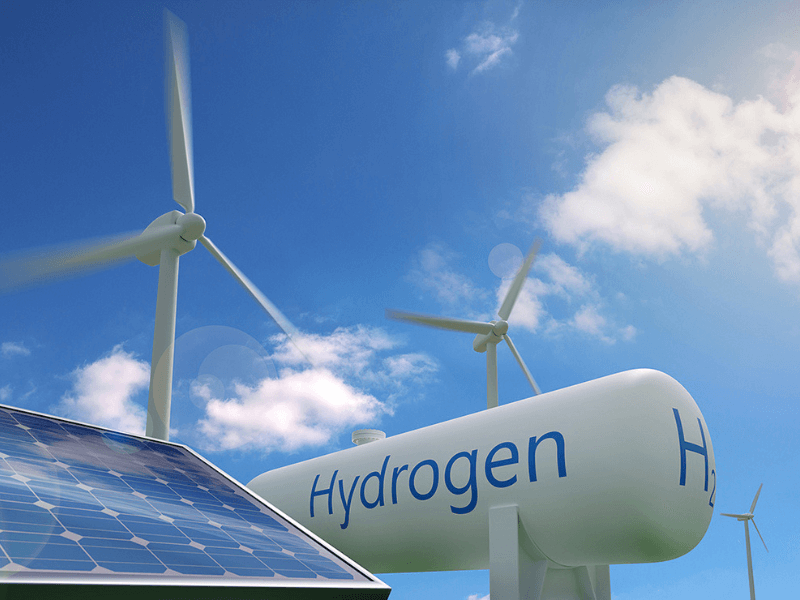
This roadmap is an opportunity for countries with high potential of hydrogen production in Latin America and the Caribbean – such as Chile, Colombia, Uruguay, Costa Rica, Trinidad and Tobago, Panama, Brazil, Paraguay, El Salvador, Peru, Mexico among others – to improve their strategies on policies, incentives, and trading schemes to leverage economic growth, social development, and reduce climate impact.
The roadmap is based on prioritizing three key strategies:
(1) Target strategic, high-impact uses for clean hydrogen. Clean hydrogen to be utilized in the highest value applications, where limited deep decarbonization alternatives exist. Specific markets include the industrial sector (e.g., chemicals, steel and refining), heavy-duty transportation, and long-duration energy storage to enable a clean grid. Additional longer-term opportunities include the potential for exporting clean hydrogen or hydrogen carriers and enabling energy security for our allies.
(2) Reduce the cost of clean hydrogen. Targets are: innovation and scale, critical material and supply chain vulnerabilities, investment in midstream infrastructure (storage, distribution) to reduce both production and delivery costs of clean hydrogen.
(3) Focus on regional networks. Investing in and scaling Regional Clean Hydrogen Hubs will enable large-scale clean hydrogen production close to high priority hydrogen users, allowing the sharing of a critical mass of infrastructure. Also, these investments will drive scale in production, distribution, and storage to facilitate market liftoff.
1. Clean Hydrogen definition includes green (electrolysis based using renewable sources), pink (electrolysis based using nuclear power) hydrogen, blue (SMR/ATR with carbon capture), methanol or ethanol routes, methane pyrolysis, biomass gasification.
2. The clean hydrogen carbonintensity is now defined as 2 kgCO2e/kgH2 against the 4 kgCO2e/kgH2 as was announced in the initial draft. There is a lot of focus on getting these certifications methodologies in place.
3. The targets for clean hydrogen production in the US are set at 10 MMTPA, 20 MMTPA, and 50 MMPTA by 2030, 2040, and 2050 respectively. These are bold targets given the dependency on several new sectors adopting clean hydrogen as an alternative feedstock.
4. Transportation (medium and long haul trucks, heavy machinery, forklifts), hydrogen for biofuels, SAF, and Power to Liquid fuels, industries (ammonia, refinery, steel, cement etc), and blending are seen as the major offtakers of clean hydrogen in the 2030-40 scenario.
5. Long duration energystorage (LDES) would pick up significantly in the 2040-50 scenario with increased penetration of renewable energy in the grid, contributing to up to 10% of the total consumption of clean hydrogen by 2050.
6. Clear targets on cost reduction of electrolyzers with the main driver being manufacturing & stack innovations, and economies of scale is expected to bring down the costs by 50-70% by 2030.
7. With the earlier announced hydrogen hubs, and also in this roadmap there is a strong push towards developing regional networks of hydrogen production and consumption.
8. 100,000 new and indirect jobs are expected to be created by 2030, and total investment of 105 – 235 B$ by 2030 is on the cards.
9. With 9.5B$ as part of Bipartisan Infrastructure Law for electrolyser research (1B$), hubs (8B$), and manufacturing (0.5B$); and approximately 20-30B$ through IRA across production incentives, fuel cell, ports, and heavy mobility; US will be one of the most attractive destinations for clean hydrogen investments globally.

Beatriz Canamary is a consultant in Sustainable and Resilient Business, Doctor and Professor in Business, Civil Engineer, specialized in Mergers and Acquisitions from the Harvard Business School, and mom of triplets. Today she is dedicated to the effective application of the UN Sustainable Development Goals in Multinationals.
She is an ESG enthusiast and makes it possible to carry out sustainable projects, such as energy transition and net-zero carbon emissions. She has +15 years of expertise in large infrastructure projects.
Member of the World Economic Forum, Academy of International Business and Academy of Economics and Finance.